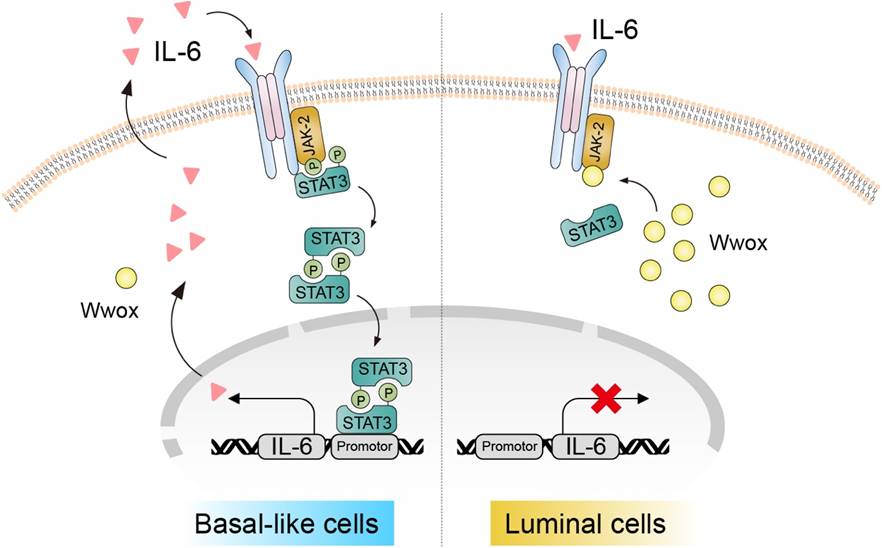Home >> ALL News >> News
Scientists Reveal the Tumor-Suppressor Role of Wwox Targeting the JAK2/STAT3 Axis in the Triple-negative Breast Cancer
2018-09-17
Based on the presence/absence of estrogen receptor (ER), progesterone receptor (PR), and human epidermal growth factor-2 (Her2), breast cancer patients can be classified into the following categories: luminal A, luminal B, HER2 overexpression, and triple-negative subtypes.
Triple-negative breast cancer (TNBC) tumors often are more aggressive, are less sensitive to typical endocrine therapies, have a poorer prognosis, and have a higher rate of distant recurrence compared to other subtypes. Patients with TNBC are difficult to treat due to the heterogeneity of the tumors and the lack of well-defined molecular targets.
A research team led by Dr. ZHAN Lixing at Shanghai Institute of Nutrition and Health, Chinese Academy of Sciences discovered a novel regulatory effect of Wwox in triple-negative breast cancer: the lower expression of Wwox was significantly correlated with constitutive activation of STAT3 in basal-like cells and TNBC tissues.
Overexpression of Wwox markedly inhibited proliferation and metastasis of BC cells by suppressing STAT3 activation, which is to interact with JAK2 to inhibit JAK2 and STAT3 phosphorylation. Furthermore, Wwox limited STAT3 binding to the interleukin-6 promoter, repressing expression of the IL-6 cytokine. Altogether, the data established that Wwox suppresses BC cell metastasis and proliferation by JAK2/STAT3 pathway. These findings offer a promising therapeutic strategy for TNBC.
This work was published online in the journal of Nature communications on August 28, 2018, entitled “Loss of Wwox drives metastasis in triple-negative breast cancer by JAK2/STAT3 axis”, and was mainly supported by the National Natural Science Foundation of China and the Chinese Academy of Sciences.

A model of the regulation of STAT3 activity by Wwox in BC. Wwox inhibits JAK2 phosphorylation and attenuates the interaction between JAK2 and STAT3, suppressing STAT3 phosphorylation and inhibiting IL-6 production
(Image by Dr. ZHAN Lixing’s Group)
Media Contact:
WANG Jin (Ms.)
Shanghai Institute of Nutrition and Health,
Chinese Academy of Sciences
Email: sibssc@sibs.ac.cn
